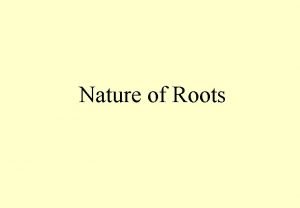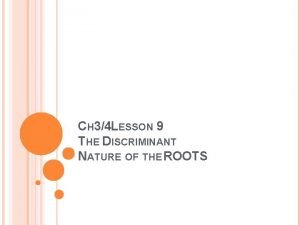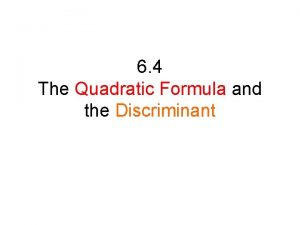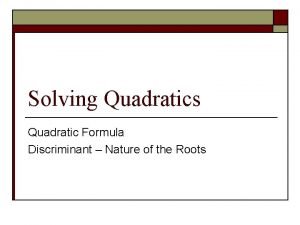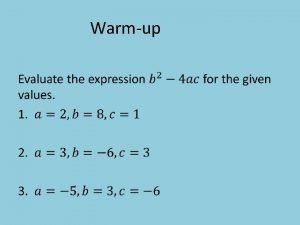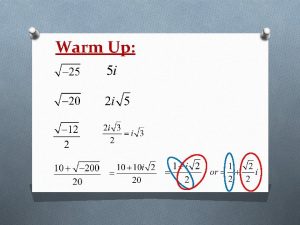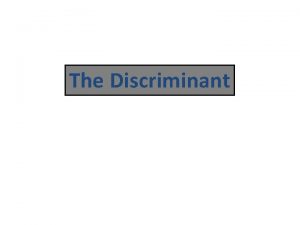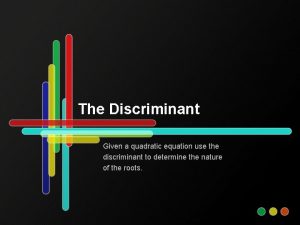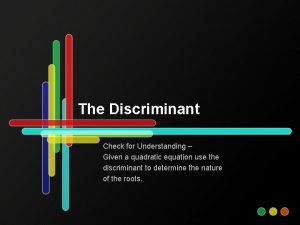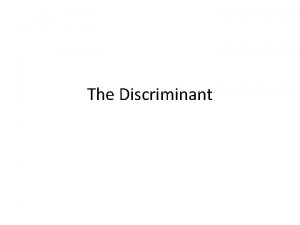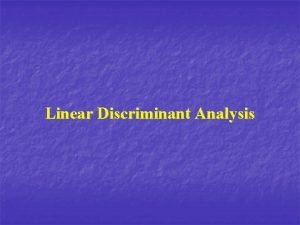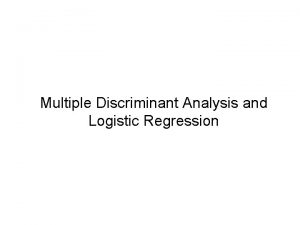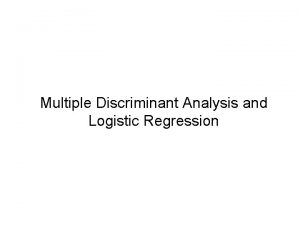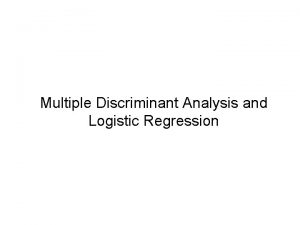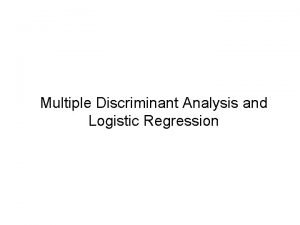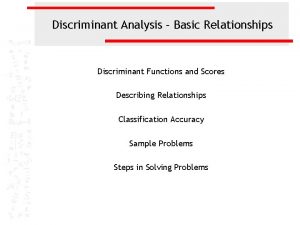CH 34 LESSON 9 THE DISCRIMINANT NATURE OF












- Slides: 12

CH 3/4 LESSON 9 THE DISCRIMINANT NATURE OF THE ROOTS

I) NATURE OF THE ROOTS The “Nature of the Roots” refers to the “Number of X-intercepts” that a Quadratic Function will have A Quadratic function can have either 2 distinct roots (2 different x intercepts) 2 equal roots (1 distinct root, double root) No real roots (no x intercepts) Use the “Discriminant Formula” to find the Nature of the roots:

II) DISCRMINANT y 2 3 1 2 x x 2 0 1 - -2 -1 0 y 0 4 x There will be a double root/ 2 equal roots x 0 1 y 4 x There will be no x intercepts/ No real roots -2 -1 0 4 -1 x - There will be 2 distinct roots

EX: DETERMINE THE NATURE OF THE ROOTS FOR EACH EQUATION: (DO NOT SOLVE) Discriminant is negative There are no real roots Discriminant is positive There are 2 real roots

II) REVIEW SOLVING INEQUALITIES: Whenever you divide or multiply by a negative number, the inequality sign will switch sides

SOLVING INEQUALITIES WITH SQUARES: When you have inequalities with squares, isolate the square and then square root both sides Draw a number line, draw the roots on the number line You will get three different domains on the number line Pick a value from each domain and check if it satisfies the inequality Domains that satisfy the equality will be your solution

EXAMPLE: SOLVE THE FOLLOWING INEQUALITIES:

PRACTICE: SOLVE THE FOLLOWING INEQUALITIES:

III) NATURE OF ROOTS (SOLVING FOR “K”) Ex: For what values of “k” does the equation have two different real roots? Since the equation has 2 different real roots, The discriminant must be greater than zero IF “K” is less than -8 or greater than 8, the quadratic equation will have two X-intercepts

Practice: For what values of “k” does the equation have a) Two equal roots b)No real roots a) Since the equation has 2 equal roots, The discriminant must be equal to zero IF K equals 6 or -6, the equation will have a double root! b) No real roots discriminant must be less than zero IF K is between 6 or -6, the equation will not have any roots

Practice: For what values of “k” does the equation have a) Two different roots b)No real roots a) the discriminant is greater than zero If “k” is less than 2. 5, the function will have two roots b) the discriminant is less than zero If “k” is greater than 2. 5, the function will have no roots

HOMEWORK: Assignment 4. 5
 Nature of roots
Nature of roots Discriminant and nature of roots
Discriminant and nature of roots Quadratic formula discriminant
Quadratic formula discriminant Quadraric formula
Quadraric formula Nature and nature's law lay hid in night meaning
Nature and nature's law lay hid in night meaning Determinace lidské psychiky
Determinace lidské psychiky Quadratic discriminant
Quadratic discriminant Types of discriminant solutions
Types of discriminant solutions Concurrent validity nedir
Concurrent validity nedir Quadratic equation questions
Quadratic equation questions When the discriminant is negative
When the discriminant is negative Find the discriminant of the quadratic expression
Find the discriminant of the quadratic expression Understanding the discriminant
Understanding the discriminant
